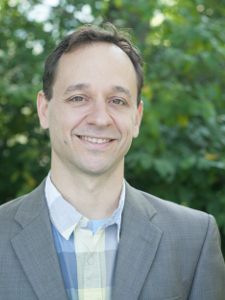
DIET & LIFESTYLE
DISCOVER HOW TO HEAL
Written by John Immel, Different Types of Evidence
Ensure Quality SourcesPrimary sources"A primary source provides direct or firsthand evidence about an event, object, person, or work of art. Primary sources include historical and legal documents, eyewitness accounts, results of experiments, statistical data, pieces of creative writing, audio and video recordings, speeches, art objects. They include Interviews, surveys, fieldwork, Internet communications via email, blogs, listservs, and newsgroups are also primary sources. In the natural sciences and social sciences, primary sources are often empirical studies (research where an experiment was performed or a direct observation was made). The results of empirical studies are typically found in scholarly articles or papers delivered at conferences," (Ithaca, 2017). Secondary sources"Secondary sources describe, discuss, interpret, comment upon, analyze, evaluate, summarize, and process primary sources. Secondary source materials can be articles in newspapers or popular magazines, book or movie reviews, or articles found in scholarly journals that discuss or evaluate someone else's original research," (Ithaca, 2017). If you read a 'fact' in an online news article (eg: Healthline) - click on the citation to ensure it's a) correct and b) from a valid sourceTertiary sources"Tertiary sources contain information that has been compiled from primary, secondary sources. Tertiary sources include almanacs, chronologies, dictionaries and encyclopedias, directories, guidebooks, indexes, abstracts, manuals, and textbooks," (Ithaca, 2017).Peer Reviewed ArticlesPeer reviewed: means the article has been written by expertsin their field and is reviewed by other experts.Look for peer reviewed articles when citing scientific information. This is the most likely way to find scientifically valid information that has conclusive information worth talking about. The journal's website will usually tell you if they peer-review. It can be hard to tell if an article is peer reviewed or "refereed", so do not stress too much about this. Some sources will allow you to search for peer reviewed journals only. Most research in the medical field is peer reviewed, major publications especially. Where to Begin? Finding Sources & Literary BanksReviewsReviews are a good place to begin: they are the academic overview of the articles published on a topic and will give good foundation info and jumping off points!
Google ScholarGoogle Scholar is a easy to use free resource. Results may include a lot of "non-scholarly" sources - you can see where it was published just under the title: Full copies of the article often available right from the search results page, look for the [PDF] or [HTML] beside the title - click it to access the article:  If there is no [PDF] or [HTML] link - fear not! You can still often access a brief overview of the study by clicking on the title, see example here. On Google Scholar you can filter by 'published' date. Consider beginning in the last 3-5yrs to avoid missing important new updates. You can also do a Google search for: SCHOLARLY ARTICLES ON <TOPIC> A DOI number is a unique number associated with each entry in PubMED that includes the MEDLINE database. This DOI number can be included in your reference if adding to an assignment. The PubMED tutorial can help you search successfully in PubMED. The DOI is usually available at the top of the article. You can use the DOI link or number.  PubMedPubMed is more in depth than Google Scholar. It compiles literature from MEDLINE, life science journals, and online books. PubMed is a surefire way to know you are getting a good source.Some citations include full texts, others include just the abstract, and some will link you to the publisher's website where you can ask for access or pay for access to the material you desire. National Library of Medicine's MeSHMeSH (Medical Subject Headings) is a controlled vocabulary thesaurus.READ MORE ON THIS TOPIC
 My Saved Articles
| Most Popular My Saved Articles
| Most Popular

About the Author John Immel, the founder of Joyful Belly, teaches people how to have a healthy diet and lifestyle with Ayurveda biocharacteristics. His approach to Ayurveda is clinical, yet exudes an ease which many find enjoyable and insightful. John also directs Joyful Belly's School of Ayurveda, offering professional clinical training in Ayurveda for over 15 years.John's interest in Ayurveda and specialization in digestive tract pathology was inspired by a complex digestive disorder acquired from years of international travel, as well as public service work in South Asia. John's commitment to the detailed study of digestive disorders reflects his zeal to get down to the roots of the problem. His hope and belief in the capacity of each & every client to improve their quality of life is nothing short of a personal passion. John's creativity in the kitchen and delight in cooking for others comes from his family oriented upbringing. In addition to his certification in Ayurveda, John holds a bachelor's degree in mathematics from Harvard University. John enjoys sharing Ayurveda within the context of his Catholic roots, and finds Ayurveda gives him an opportunity to participate in the healing mission of the Church. Jesus expressed God's love by feeding and healing the sick. That kindness is the fundamental ministry of Ayurveda as well. Outside of work, John enjoys spending time with his wife and 7 kids, and pursuing his love of theology, philosophy, and language. STUDY AYURVEDA
Questions, Comments & Impressions of 'finding quality sources in health & wellness research'?Is there something else you'd like to know about 'finding quality sources in health & wellness research'?1 like      Sign in to review this article Sign in to review this article
|
Join Joyful Belly.
Want our top Ayurvedic recipes and health tips?Subscribe to our free newsletter!



 On MeWe
On MeWe On Pinterest
On Pinterest On Facebook
On Facebook On Twitter
On Twitter On WhatsApp
On WhatsApp On Email
On Email


